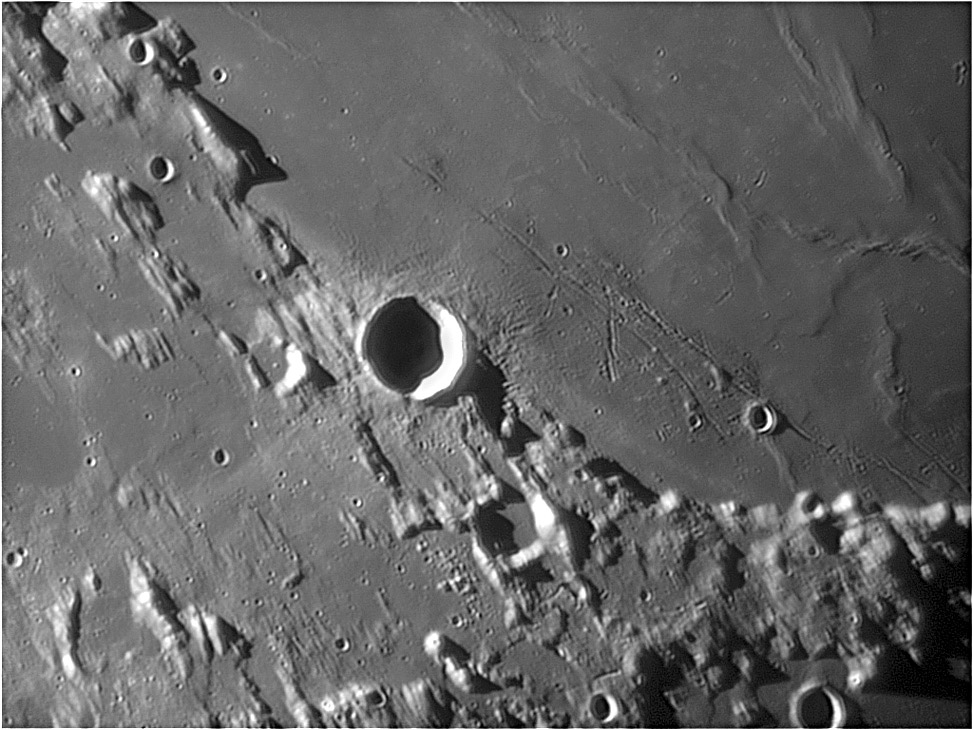
image by Jérôme Grenier, Paris, France
On Earth and Mars, persistent, long-term blowing of the wind gradually erodes mountains and hills into elongated streamlined ridges called yardangs. No one has ever considered that the Moon has yardangs - a lack of atmosphere would seem to prohibit their formation - but I can’t look at Jérôme’s image without thinking of them. The Haemus Mountains here near the crater Menelaus have been scoured into parallel ranks of rounded ridges. But unlike slowly-formed terretrial yardangs these were carved nearly instantaneously by one stupendous event. And the wind was not atmospheric, but was a hurricane of rock - 10s of meters to flour sized- rushing out over the countryside. These lunar yardangs are the best evidence that ejecta from the formation of Imbrium’s impact basin wasn’t restricted just to ballistic delivery. Some must have screamed (there was enough vaporized material to create a weird atmosphere that could probably carry sound) across the surface as ground-hugging walls of debris, ripping aside anything in its path - notice older crater rims are missing perpendicular to the scour direction. All existing craters were destroyed or strongly modified; the small features visible here, as well as the lavas ponded in the shallow spots, all formed since the passage of the ejecta. And if that isn’t enough to stimulate your observational juices, Jérôme also captured the Menelaus Rilles. These occur in a piece of early mare lavas that has been surrounded by younger ones. And the hill sliced by a short rille doesn’t seem to be a dome, but just a high piece of older lava that escaped burial by the newer.
Technical Details:
4 Aug, 2007, 22h46m in average seeing. Orion Optics (UK) OMC 12″ + barlow 2x + red 23a filter + DMK 31AF03; 500 frames stacked in Registax.
Related Links:
Rükl charts 23 & 24
Jérôme’s website
You support LPOD when buying lunar books (or ANY book) from Amazon!
COMMENTS?
Register, and click on the Discussion tab at the top of the page.



